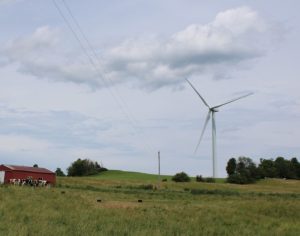Projects at two Upstate universities and one manufacturer will use state funding to develop technology that add “resiliency and efficiency” to New York’s electric grid.
The New York State Energy Research and Development Authority (NYSERDA) has awarded $3.3 million in funding to seven research teams at Cornell University in Ithaca, Clarkson University in Potsdam, and at Lockheed Martin Corp.’s (NYSE: LMT) plant in Owego.
The state awarded the funding through NYSERDA’s electric-power transmission and distribution smart-grid program.
(Sponsored)
The Importance of Relationship Banking for Small Business Success
Small business owners wear many hats. Each day can bring on new challenges requiring valuable time and focus – especially in the competitive economic environment we live in today. The

Final Regulations for the Advanced Manufacturing Production Credit
The IRS recently issued final regulations for the Section 45X Advanced Manufacturing Production Credit, clarifying and expanding key provisions from the proposed regulations released in late 2023. These updates are
The “smart grid” technologies will “enhance” grid performance, reduce the risk of power outages, lessen environmental impacts and energy consumption, and reduce the cost of power delivery, the office of Gov. Andrew Cuomo contended in a news release.
A smart grid is a modernized electrical grid that uses technology to gather and act on information in an “automated fashion” to improve the efficiency, reliability, economics, and sustainability of the production and distribution of electricity, according to Cuomo’s office.
In order to qualify for funding, award recipients proposed projects that improve the reliability, efficiency, quality and overall performance of the electric power delivery system in New York.
The state required the proposals to demonstrate “significant” statewide public benefit and quantify all energy, environmental, and economic impacts, the governor’s office said.
Developing smart grids is part of the New York State Public Service Commission’s renewable-energy vision, which calls for identifying smart-grid technologies to facilitate increased distributed-power generation to promote electricity-load management and greater system efficiency.
The funding awards included $381,000 for Clarkson University in Potsdam for a project that seeks to design a resilient underground microgrid.
NYSERDA is partnering with Clarkson, National Grid (NYSE: NGG), General Electric Co. (NYSE: GE), the State University of New York (SUNY) at Potsdam and other local businesses to plan and design a large microgrid system to generate electricity for a number of entities in the village of Potsdam, the state said.
The power system would supply electricity to Clarkson and SUNY Potsdam, along with Canton-Potsdam Hospital and National Grid’s Potsdam service center.
The region has been “particularly susceptible” to power outages due to winter storms and flooding, and the underground system would provide a localized source of power that would be more energy-efficient and resilient, according to the governor’s office.
Cornell University will use $227,000 to study the potential of several improvements to an existing campus microgrid.
The school will “sophisticated modeling” and integrate smart-building controls and add on-site renewable energy sources and energy storage to explore ways of improving campus heating, cooling, and electric generation, according to Cuomo’s office.
Cornell expects the resulting configurations to improve energy efficiency and reliability, demonstrating how distributed energy resources can be combined on a large campus.
The system would be an integral part of Cornell’s climate-action plan, which calls for university operations to be “climate neutral” by 2050.
The Owego site of Bethesda, Md.–based Lockheed Martin will use $300,000 as it seeks to develop and demonstrate a computer technology that combines aerial data with an analytics system to immediately locate power outages or line damage after a major storm, according to Cuomo’s office.
The technology would allow utilities to accurately assess damage, distribute resources to the right place, and resume normal operations quickly and efficiently.
If demonstrated successfully in New York, the program could be expanded to include other utility-based applications to further promote “efficiency and resiliency.”
It could also help grow jobs in the company’s Owego facility.
Lockheed Martin will test the project in New York State Electric and Gas Company’s territory in Brewster, the governor’s office said.
Contact Reinhardt at ereinhardt@cnybj.com



